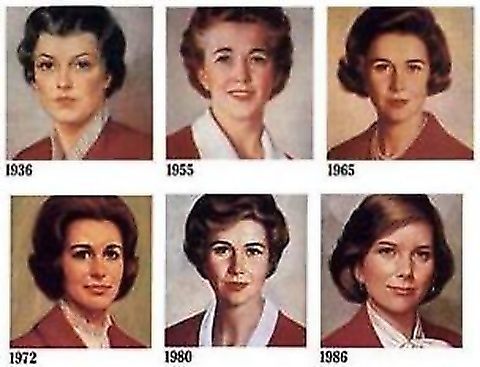Part Two: The Decline and Fall
by John Michael Greer on 6 Aug 2008 in thearchdruidreport.blogspot.com
Raspberry jam, the ostensible subject of last week’s Archdruid Report post, is only one of hundreds of goods and services that until recently were produced almost entirely in the household economy, outside the reach of the market. Nowadays, by contrast, nearly all those goods and services are either produced commercially or are not available at all. This represents an economic transformation on a massive scale, and yet it’s one that has seen remarkably
little discussion by economists.
It also represents a social transformation of equally massive scope. Visit the library of an American public university that has not yet taken up the currently fashionable habit of purging its collection of “outdated” materials, wander through the stacks until you find the dingiest and most neglected shelves in the building, and odds are that you’ll be looking at the mummified remains of a field of study, a profession, and a university department as
dead as the dinosaurs, and a good deal less popular nowadays: home economics.
Not all that many decades ago, an impressive network of home economists working for universities, county extension services, and private industry provided an extensive support system for the household economy. Backing that network, and the by no means negligible expenditures that supported it, was an almost universal consensus that recognized the social and economic importance of the household economy. The experience of two world wars, in which government-promoted home
economics measures had played a major role in softening the impact of food rationing and enabling the United States to feed armies and allies alike, gave support to that consensus.
At the same time, the household economy had long faced steady pressure from the expansionistic habits of the market economy. Beginning around the end of the 19th century, and accelerating over the decades that followed, the market seeped into the domestic sphere with a steady stream of “convenience” products and “labor-saving” devices. Many of these were neither convenient nor labor-saving, but the massive marketing programs that backed them up
made them highly fashionable, especially in the newly prosperous middle classes that emerged as the 20th century wore on and America entered on its age of empire.
These two major social forces – the broad consensus surrounding the domestic economy and the expanding pressure of a metastatic market economy – finally collided head on in the decades following the Second World War. A third force, however, played what may well have been the decisive role in the collision. Bringing up that third force at all may be problematic, for it’s remained a hot-button issue in American culture right down to the present, and very
few people seem to be able to discuss it dispassionately just now. Still, what happened to the household economy is impossible to understand without taking it into account. That force, of course, is the role played by the economics of gender in launching and shaping the second wave of American feminism in the 1960s and 1970s.
Many currents of social change flowed together to launch the women’s movement of the 1960s, but one factor that has not always been given its due is the impact of the abrupt changeover from the war economy of the 1940s to the consumer economy that followed it. As the troops came home, government and industry alike did everything in their very considerable power to get Rosie the Riveter off the factory floor and turn her into Suzy Homemaker as fast as possible, in
order to free up jobs for millions of demobilized soldiers. At the same time, the quest for markets to fuel the consumer economy’s expansion and employ those same millions threw the market assault on the household economy into overdrive.
Postwar propaganda – “advertising” is too mild a word for the saturation campaigns that flooded the popular media in the late 1940s and early 1950s – presented middle class families with a glittering image of affluence in which convenient, up-to-date consumer products provided by the market would replace the dowdy routine of the domestic economy with a life of elegance and leisure. The reality behind the facade turned out to be much less palatable.
Denied both the place in the market economy they had occupied during the war years, and the role in the household economy their mothers had held before that, millions of middle class women across America found themselves expected to lead a purely decorative and essentially purposeless existence.
As a motor for rebellion, deprivation of meaning is even more potent than deprivation of food, and so an explosion was inevitable. Many of the forms that explosion took were altogether admirable. A great many injustices were set to rights, or at least challenged, and social roles that had become hopelessly restrictive for women and men alike came in for a much needed reassessment.
Still, as the feminism of the Sixties and Seventies percolated outward into popular culture,
it suffered in some measure the common fate of progressive social movements in the modern West: instead of challenging the system of male privilege, and the presuppositions that underlay it, a great many women who considered themselves feminists simply set out to seize their share of the positions of privilege within the existing system.
In the process, no small number of them embraced the manners, mores, and attitudes of those they hoped to supplant. Compare a Playboy from the 1960s with a Cosmopolitan from the 1980s, for example, and it’s impossible to miss the parallels, all the way from the shared obsession with sexual conquest, conspicuous consumption, and personal appearance, to the mutually interchangeable cover girls meant to allure potential readers. The astonishing thing is that the “Playboy
man” and the “Cosmo girl,” those airbrushed icons of consumer culture, were both considered to be liberated, and liberating, in their day.
The household economy, or what was left of it, was one of the casualties of the process that made these dubious figures popular. The feminist movement might have posed hard questions about the relative social value assigned to the household and market economies, and indeed some of the subtler minds within the movement made forays in this direction, but their ideas found few listeners.
Instead, many feminists – and ultimately a great many American women – simply
accepted the relative values their culture assigned to the two economies, and aspired to the one that they were taught to consider more valuable. The ensuing shift in attitudes cut the ground out from under the consensus that once made home economics relevant; by the 1980s most universities had closed their home economics departments, and county extension agencies and private firms followed suit.
Still, the old social roles assigned to women carried so much emotional force in the collective imagination for so long that they had to go somewhere. To a remarkable extent, they came to be applied to the institution that supplanted the economic roles once held by women: the market itself. Look at the rhetoric applied to the market over the last few decades and you’ll find every cliché applied to women in 1950s men’s magazines present and accounted
for.
The market, in effect, has become American society’s coquettish and curvaceous sex kitten, its June Cleaver mom complete with patriotic flags and apple pie, its nubile innocent waiting to be rescued from the lustful grasp of government regulations and tax collectors. Placed on a rhetorical pedestal as absurdly florid as anything Coventry Patmore ever said about Victorian womanhood, and abused and exploited as ruthlessly as Victorian women so often were, the market
is America’s pinup girl, the focus of overheated notions every bit as detached from real life as the fantasies that filled the pages of Playboy or Cosmo in their prime.
Any attempt to rebuild the household economy in the wake of peak oil will inevitably have to contend with these issues. It’s not at all uncommon today, for example, to find couples for whom the cost of professional childcare, an extra car and commuting expenses, and the other costs of a two-salary lifestyle add up to more money than the second salary brings in. In many cases these families would come out substantially ahead if one of the adults were to stay home
and provide the same services within the household economy, but in the present social climate, this option is very nearly unthinkable for many people.
As a longtime househusband, I can speak to this from a certain degree of experience. During slightly more than half of 24 years of married life, it made a great deal more economic sense for my spouse, a bookkeeper, to work in the market economy, while I tended the garden, cooked the meals, did most of the cleaning, and worked my way through the long learning curve of a career as a writer in my off hours. I came in for a fair amount of criticism for making this choice,
though I have to say it was a great deal less savage than the treatment meted out, mostly by other women, to women I knew who made the same choice. Despite the pressure, though, it was unquestionably the right choice for us; it enabled us to maintain a very comfortable lifestyle on a modest income.
That choice is likely to be at least as valuable an option for a great many more people as the market economy contracts in the wake of peak oil. The abandonment of the household economy, after all, was only viable in the first place because of the temporary conjunction of American imperial expansion with the rapidly expanding fossil fuel production of the postwar years. As America’s empire frays and global energy production falters, the costs of the energy-intensive
economic structure we have built over the last sixty years will fairly rapidly begin to outweigh its benefits. In that context a renewal of the household economy offers one valuable set of tools for taking up the slack and providing needed goods and services, and those dusty books in the home economics section of your local college library may turn out to be valuable once again.
Such a renewal, though, will require a reassessment of social roles and values as ambitious as anything the pioneering feminists of the 1960s envisaged. Measures of value evolved within the market, and shaped to a large degree by market-centered ideologies, fall flat when applied to nonmarket economies in which custom, reciprocity, and collective benefit govern exchanges, rather than the quest for individual profit. Money itself, that abstract fiction that has very nearly
smothered the real economy of goods and services it originally evolved to support, may be a good deal less relevant as alternative forms of value become ascendant. The form that will be taken by those alternatives in the ecotechnic world of the future is probably impossible to guess at this point, but an openness to options and a willingness to look beyond the market are likely to be valuable steps just now – and a renewed household economy may just turn out to
be the seed from which the economics of the future can take root and grow.

image above: Corporate
images of first and last Betty Crocker images (1927 and 1996) |

